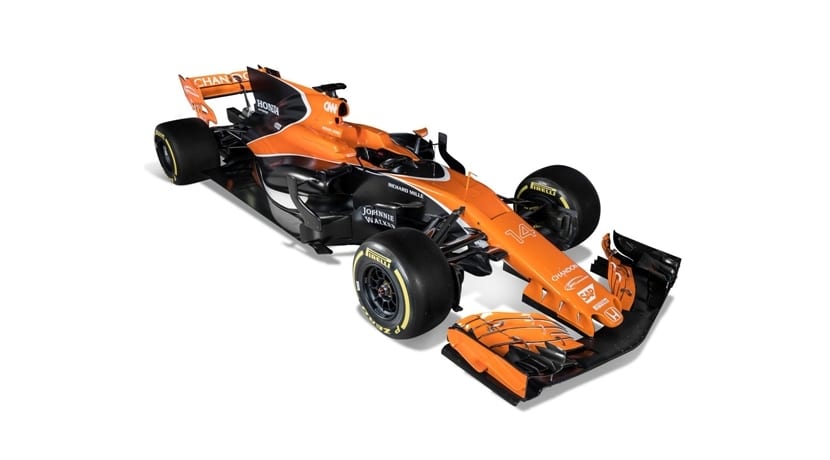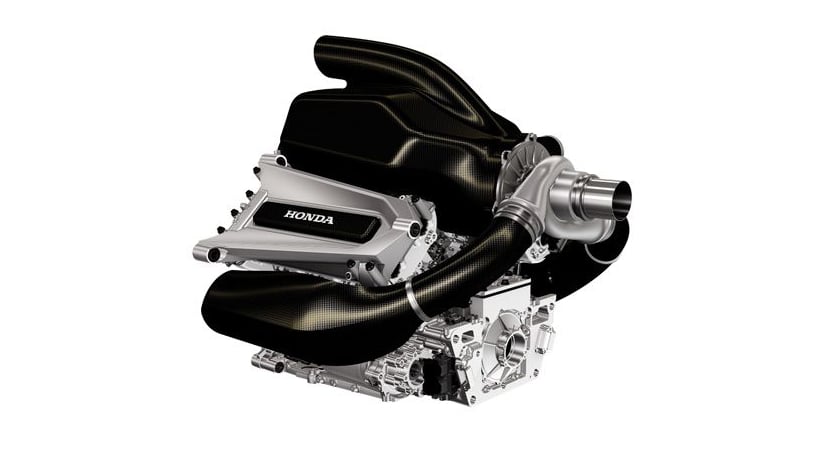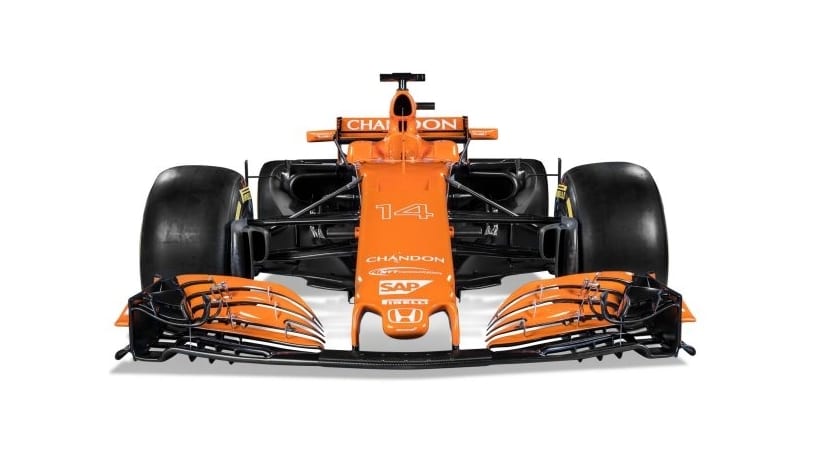
It already seemed like an open secret, the rumors of the return of the orange, the statements of the bosses and the numerous clues that they have left on social networks indicated that the color of the new single-seater McLaren Honda MCL32 It was going to change a lot and orange would be the protagonist. I don't particularly like the new color, I was expecting something else, like a completely orange F1, since I don't like those dark and white areas too much. But the decoration is not the most important thing, it also seems that Fernando Alonso likes it, since he has said that it is the most beautiful car he has driven in the last 16 years. And if the fans like it too, then we can settle the color issue and focus on our technical analysis of what's new to see.
If you have been following the news on our blog, you will know that erased all reminiscences of Ron Dennis, and not only to the name MP4-32 as it should have been called, but also Jost Capito has left the team and other greats who were quite close to Dennis have left Woking in recent weeks. Now Zak Brown is at hand and McLaren is almost renewed, hopefully to start a new era with more success than the last. Some rumors have said that McLaren could be the underdog this season, but we will have to be cautious and wait, in fact, McLaren's own have said that they do not believe that they will be ahead in 2017 and will work to win in the future, Honda has also been restrained, saying they don't want to promise anything and are working hard. We also know that Mercedes is still the team to beat, and that Red Bull has high hopes for the new RB13, and they already say that it will be one of the most aggressive and beautiful designs in history...
Engine:

The new MCL32 is a details car, and I hope that the Japanese have also gone into detail to review and improve each of the parts that make up the engine, and that the new concept works in terms of performance and reliability. And I say this because it has been rumored that Honda will totally change its architecture to more closely resemble that of Mercedes. We do not know exactly what the Japanese have done, but they should have focused on their ICE (combustion engine), since in the ERS section (electrical part) they are at a very good level. However, they will also work on the MGU-K and MGU-H, in addition to the ES (batteries). But it is all unknown, both Ciryl Abiteboul (Renault) and Andy Cowell (Mercedes) have been intrigued to see what Honda does in its third year and are looking forward to it.
The only thing we know for sure is that they have modified the engine a lot, and they have risked a lot, taking risks as Yasuke Hasegawa has well assured: «It is a completely different concept. We have taken a high risk because we don't know too much about this new concept.«. Hasegawa has also assured that they have reduced engine weightThey have lowered the center of gravity to improve vehicle dynamics (car balance).
On the other hand, BP Castrol also has a good role to play, improving the fuels and lubricants that help the RA617H engine perform better and be more efficient by reducing friction. The good thing is that they are not tied to the fact that the token system has disappeared, although to correct a failed concept, redesign the parts, take them to the test bench, and finally test them on the track and adjust them, it takes time and you can not change an engine From overnight. So the hard work should have been done on Sakura already, leaving only some minor improvements planned on her roadmap for the rest of the season…
*Although it has nothing to do with the engine, to say that the carbon discs for the brakes have changed this season, they have become wider and the cooling needs have changed. Although Brembo is one of the most important suppliers to the grid, McLaren's supplier is AkebonoWe'll see how they work...
Aerodynamics:

The car is not the most amazing that we have seen, but it may have secrets in its materials. It has been rumored that McLaren could have used advanced materials for the construction of the MCL32, to make them lighter or more flexible (within the law). Starting with the front photo, we see a delta-shaped front wing, wider for the new 2017 rules. Its central area is quite narrow, held to the nose by delicate brackets. The nose is slightly wider, but still has the typical nose to leave a little more room to channel air to the rear without raising the nose to meet the regulations prohibiting high noses. The S-Duct is present in the nose, something that helps aerodynamic efficiency and that all the teams seem to have adopted.
The brake ducts have grown in size from last year, as on other teams. Normally they are reduced, but it seems that the new brake discs to withstand the new demands of the 2017 cars need more air. As for the airboxIt is very narrow and small. There is only a small oval for air intake and two tiny holes under it for cooling. Being so narrow it doesn't affect the rear wing too much. However, they have implemented a large shark fin. Surprisingly, since there are no large cooling intakes on the pontoons to compensate for this, it seems that they have worked severely on the cooling so as not to demand large intakes that increase drag.

Other interesting details can be seen in this other photo. One is behind the front wing mount, with some gills that we have not seen in any other car, and that are aimed at conditioning the air that travels towards the back of these. Under the nose there are also profiles to channel the air that catches the nose and there will be the intakes for the S-Duct. There are also some elaborate turning vanes.
But if we look at this photo and the next one, we can see that again in Woking the greatest work has been focused on this middle area of the vehicle. Chance? I don't think so, reducing the drag or aerodynamic resistance is vital this year, by increasing the dimensions to increase the aerodynamic load, the resistance also increases and that will make the engines work harder and allocate about 20 or 30CV simply to counter this effect. So having an aerodynamically efficient chassis could save some horsepower that can be used to make the car faster. Those of McLaren have managed to form some vertical and horizontal profiles in that area, with quite complex shapes. For example, the bargeboards are attached to the nose with a profile, creating a channel through which the air passes towards the rear. The tea-tray is also quite elaborate. In the following image you can see how the bargeboards join the air conditioners of the sidepods and see that kind of fences or aerodynamic horizontal profiles appear in pairs on each side...

In the following image you can better appreciate the detail of the bargeboard and how it is divided into two pieces and attached to the side pods side conditioners. In the case of McLaren, these conditioners are boomerang-shaped and have vertical profiles to condition the air on the pontoons, as well as a horizontal fin in the same area. The work done on the pontoons It is also to be admired, with a fairly compact rear area, somewhat more than last season, and that it was rumored that they would abandon the size-zero concept.
The flat bottom is very clean on its sides, I dare say that it is almost certainly false to hide some intelligent solutions that remain to be seen, surely they have worked much more on the real carbon fiber, with profiles, edges and grooves that we have seen in other designs to seal the bottom and generate a better ground effect, without "dirty" the air that travels to the diffuser with turbulence. But for what the diffuser works well, it is also important that the pontoons allow air to pass to the rear area. That is why they have been reduced quite a bit, they are very narrow and leave a channel through the lower area of them to bring air to the back area. The cooling openings of the pontoons are not too radical in terms of shape, but they are very small and tend to close towards the front, allowing the air flows to slide around the entire contour towards the rear.

We can say little about the diffuser, because it was naturally hidden. But more details can be seen on the car. As the extreme complexity of rear wing endplates. Undoubtedly it is the most advanced design in this area of the cars that have been presented so far. As for the main profile and the flap of the DRS, there are not too remarkable things, but the regulations allow you to play a lot with the area of the wing's side supports, and the team led by Peter Prodromou (Adrian Newey's right-hand man when he was in Red Bull) has made good use of it. If you look at the following photograph you can see how, in addition to the typical gills at the top, they have also created complex shapes in the lower area, and instead of a simple widening of the supports in the upper area, they have curved the profile to generate a kind of "funnel" channel with its teeth to accelerate the flow that travels through the area below the wing profile and thus increase the efficiency and load of the wing without having to have a much larger wing.

ConclusionsI would like to be cautious as Honda and McLaren have been, it looks good, but Mercedes and especially the dreaded Red Bull look very strong. We'll see if they can fight with Ferrari and maybe get some podium that the top guys miss in changing weather situations or if they have some kind of problem or error. It sounds daunting, having to wait for other people's problems to fish in a troubled river, but it is what it is. Hopefully they can aspire to be third in the constructors' championship, unless the Honda engine has taken such a leap in quality that it surprises us and they can aspire to podiums... I hope I'm wrong and they're hiding!